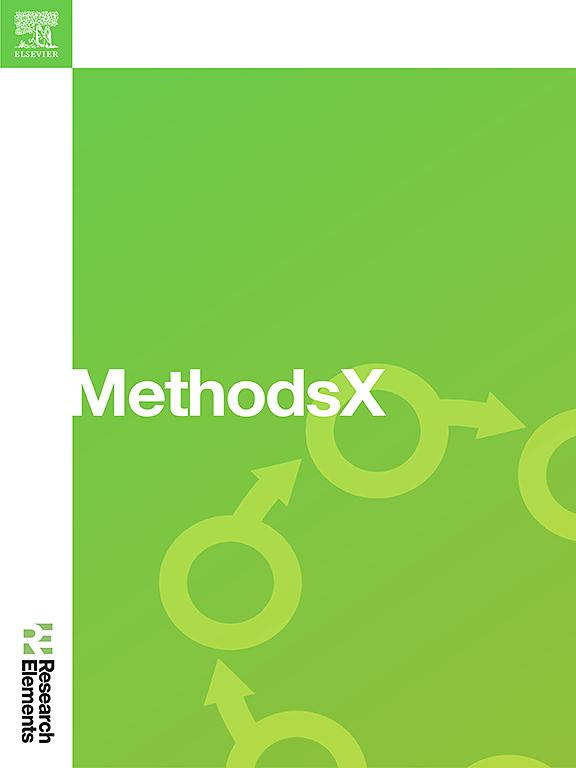Simplified method for purifying full-length major type IV pilins: PilA from Acidithiobacillus thiooxidans
IF 1.9
Q2 MULTIDISCIPLINARY SCIENCES
引用次数: 0
Abstract
Type IV major pilins are membrane-associated proteins that play critical roles in bacterial adaptation and survival across diverse environmental conditions, including potentially extreme ones. However, their expression and purification remain challenging due to their hydrophobic nature and tendency to aggregate. Here, we present a cost-effective method for the production and purification of recombinant full-length PilA, the major type IV pilin from the acidophilic bacterium Acidithiobacillus thiooxidans. By expressing the protein as a thioredoxin (Trx) fusion in Escherichia coli and using detergent-based solubilization combined with manual nickel affinity chromatography and spin-column anion exchange, we obtained stable and well folded protein suitable for downstream biophysical assays. Our approach eliminates the need for sophisticated FPLC systems and high-end chromatography columns, making it accessible to laboratories with limited resources. Structural stability of the purified protein was validated through intrinsic fluorescence spectroscopy under varying pH and denaturing conditions. This method can be readily adapted for the production of pilins from extremophilic and other pathogenic bacteria, providing a valuable tool for biotechnological and biomedical applications.
- •Enables purification of full-length pilins without requiring FPLC or high-cost columns
- •Applicable to the expression and analysis of structurally challenging pilins
- •Produces material suitable for biophysical studies, including fluorescence-based assays and structural analyses

从酸性硫氧化硫杆菌中纯化全长主要IV型PilA的简化方法
IV型主蛋白是一种膜相关蛋白,在细菌适应和生存各种环境条件(包括潜在的极端环境)中起着关键作用。然而,由于它们的疏水性和聚集倾向,它们的表达和纯化仍然具有挑战性。在这里,我们提出了一种低成本的方法来生产和纯化重组全长PilA,这是来自嗜酸硫氧化硫硫杆菌的主要IV型pilin。通过在大肠杆菌中以硫氧还蛋白(Trx)融合体的形式表达该蛋白,并结合人工镍亲和层析和自旋柱阴离子交换,采用洗涤剂为基础的增溶技术,获得了稳定且折叠良好的蛋白,适合于下游生物物理分析。我们的方法消除了对复杂的FPLC系统和高端色谱柱的需求,使资源有限的实验室也可以使用。在不同的pH值和变性条件下,通过本禀荧光光谱验证了纯化蛋白的结构稳定性。该方法可以很容易地适用于从嗜极细菌和其他致病菌中生产柱状蛋白,为生物技术和生物医学应用提供了有价值的工具。•能够纯化全长柱,而不需要FPLC或高成本柱•适用于结构挑战性柱的表达和分析•生产适合生物物理研究的材料,包括基于荧光的分析和结构分析
本文章由计算机程序翻译,如有差异,请以英文原文为准。
求助全文
约1分钟内获得全文
求助全文
来源期刊

MethodsX
Health Professions-Medical Laboratory Technology
CiteScore
3.60
自引率
5.30%
发文量
314
审稿时长
7 weeks
期刊介绍:
 求助内容:
求助内容: 应助结果提醒方式:
应助结果提醒方式:


